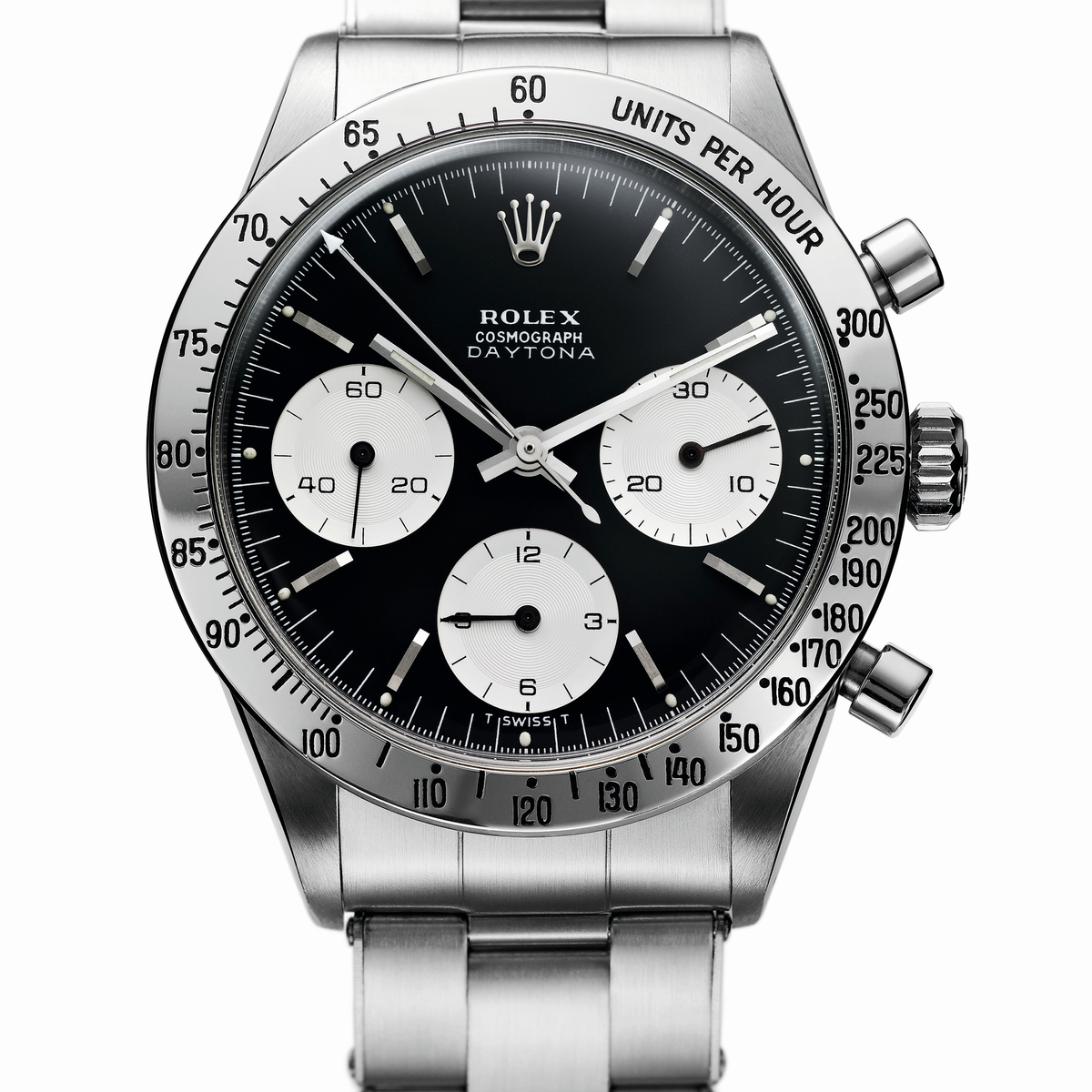Launch Year
1963
Functions
hours, minutes, seconds, chronograph, tachymeter scale
Movement
mechanical manual-winding
Distinctive features
chronograph wristwatch designed for professional racing drivers
When the Cosmograph Daytona launched in 1963, the circuit after which it is named was already legendary. Motor races have been held on the rock-hard sand of Daytona Beach, Florida, since 1903.
The steel chronograph that Rolex introduced in 1963 as the Cosmograph – a term invented by the brand – falls into the professional watch category, being designed for drivers to use during races. It was essentially distinguished by its unprecedented readability. The counters stood out from the dial thanks to a strong colour contrast: black on a light background or light on a black background. As for the tachymeter scale, used to calculate an average speed over a given distance, it freed up space by moving to the bezel. The watch was presented in an Oyster-type case. Patented in 1926, this is one of the very first truly water-resistant models in the history of wristwatches thanks to a system of bezel, caseback and crown screwed to the case middle. Waterproofness was reinforced in 1965 when the pump pushers for the chronograph were replaced by screw-down pushers, while the introduction of a black plexiglass bezel insert with white graduations further enhanced legibility. That same year, Rolex introduced its first precious model, with a yellow gold case and a chronometer-certified movement.
While the Cosmograph was immediately associated with Daytona's endurance races, the Daytona inscription on the dial was initially reserved for the American market. It was gradually extended to other markets and finally printed in red letters in an arc above the 6 o’clock counter. Among the variations of the Cosmograph Daytona during its first years of existence, one has become particularly famous: the version worn by the actor Paul Newman, a keen racing driver. His model is characterised by a dial on which the outer seconds track adopts the same colour as the Daytona inscription and the counters, along with square-shaped hour-markers and an Art Deco numeral font.
Always equipped with mechanical movements, the Cosmograph Daytona switched from manual to automatic winding in 1988. Initially, Rolex opted for a quality third-party calibre that was significantly modified to meet Rolex’s requirements, notably resulting in systematic COSC chronometer certification. Since 2000 the Cosmograph Daytona has been powered by Calibre 4130, designed and manufactured entirely in-house and, since 2016, has been Superlative Chronometer certified. This standard was introduced by Rolex in the 1950s and reinforced in 2015 to set a new benchmark for excellence in mechanical movements. For a watch to be awarded Superlative Chronometer status, it must demonstrate “superlative” performance in terms of precision (-2/+2 seconds per day), waterproofness, automatic winding and power reserve. Further refinements have been made, such as the black Cerachrom bezel insert, introduced in 2016. There have also been executions in Everose gold with a rainbow sapphire bezel (2018), in yellow gold with diamonds on the bezel and dial (2019) and a meteorite dial (2021).
Key Characteristics
• Chronograph created for racing drivers, easily legible white counters on a black dial background, tachymeter scale on the bezel
